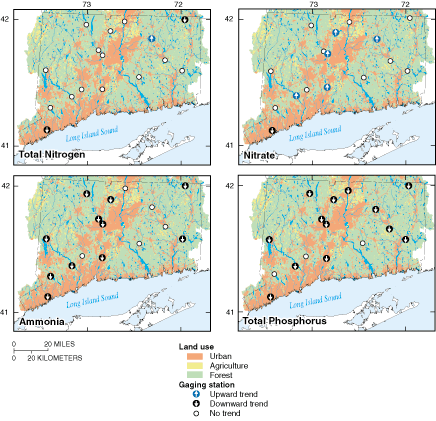 |
| Despite decreases in ammonia and phosphorus in the Connecticut, Housatonic, and Thames River Basins, nutrients are still considered an environmental concern in Long Island Sound. Significant downward trends in total phosphorus concentrations were documented in 13 of 16 streams and rivers from 1980 to 1992 in the Connecticut, Housatonic, and Thames River Basins. The decreased phosphorus concentrations are likely due to improvements in wastewater treatment and to the elimination or reduction of phosphates in detergents. Ammonia decreased and nitrate increased during the same period, primarily as a result of the improved wastewater treatment processes, which convert ammonia to nitrate. Although improved treatment technology has enhanced surface-water quality in many parts of the Study Unit, the total amount of nutrients (particularly nitrogen) discharged to Long Island Sound is still considered an environmental concern. Excess nutrients continue to cause algal blooms, which decay and result in low dissolved-oxygen concentrations and poor habitat for fish and other marine animals in the Sound. |